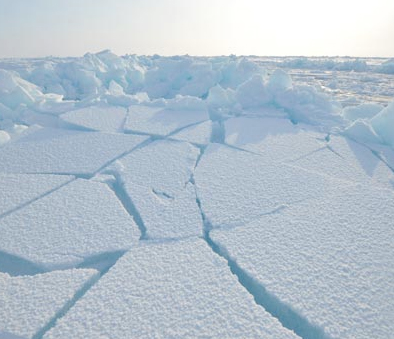New Scientist
Image: Scheherazade Al Arab
Appearances can be deceptive. At first glance, the sea ice that covers polar regions in winter seems rather barren – but clinging to the bottom of it are remarkable upside-down algal “forests” that support a wide array of creatures.
Not long ago Arctic researchers assumed phytoplankton blooms were restricted to open waters, and for good reason: the algae rely on light to survive and little of this makes it through a couple of metres of ice. A few years ago, however, researchers cruising in the Chukchi Sea between Alaska and Siberia found massive phytoplankton blooms beneath sea ice – with a biomass that was, in places, four times as much as the amount in open waters.
It’s now clear that the discovery was just the tip of the iceberg. In 2014, researchers had their first opportunity for a closer look beneath the ice using a new submersible – the Nereid Under Ice Vehicle designed and built at the Woods Hole Oceanographic Institution in Massachusetts. At the American Geophysical Union meeting last month, they revealed that the submersible uncovered diverse animal communities thriving just below the ice. Read more on newscientist.com…








